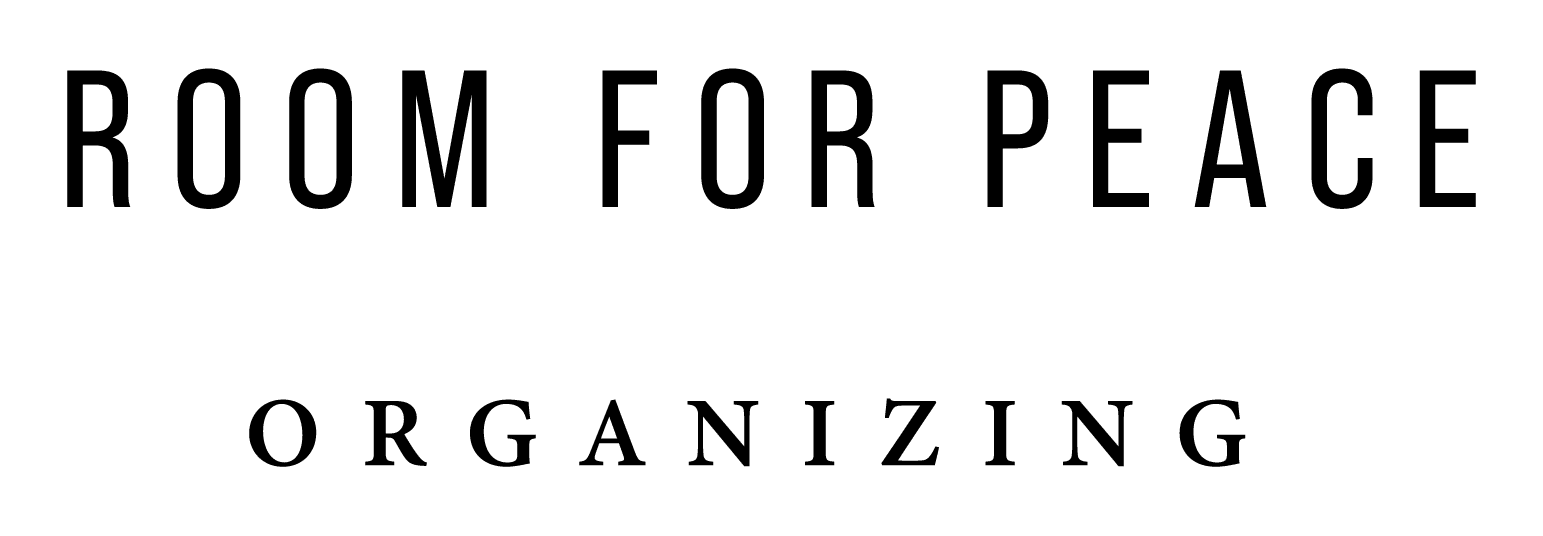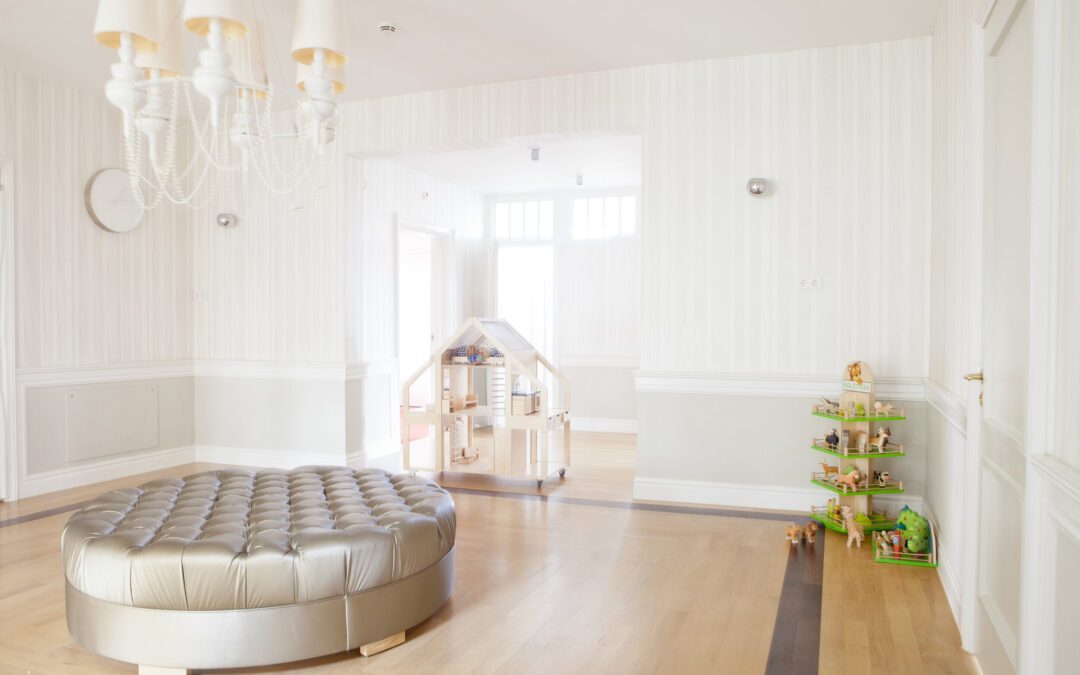Nesting: the burst of desire women often get in the last few weeks of pregnancy to clean and organize the house in preparation for baby’s arrival.
These instincts typically hit around week 38 or 39 of pregnancy or a few weeks before your due date. This is often when I get calls for additional help, as the deadline is approaching and there is so much left to be done! 9 months is a long time to prepare, and similar to most far-out deadlines, the tendency to procrastinate and think you have plenty of time can leave you scrambling around last minute.
That’s why I created a room-by-room plan to keep clutter at bay and get totally ready for when you walk through the door with your new little bundle ♡
ENTRYWAY
We often automatically think of the nursery when it comes to preparing for baby- but that can be one of the more simple places when it comes to organization. It’s immediately when you walk through the door that needs attention to avoid dumping zones and clutter traps. Think: car seats diaper bag, stroller, your purse, incoming packages of diapers…the list can go on and on. Thinking ahead and getting on top of these zones will save you a lot of energy and frustration in the long run.
*The layout of your entry way will determine your options for storage and organization
If you have a coat closet- this can be transformed into a functional “command station” when set up the right way. (Plus, in Charleston we’re fortunate to not need access to these coats for much of the year!)
Use the top shelf for bulky items like baby bags and baby carriers
A small shelf can be added to house more items and maximize vertical space
Hooks can be added to the side wall for mounting a stroller our holding bags out of the way
If there is no coat closet in your entryway, consider adding a hall tree or mudroom style shelving for extra storage. (See linked items below)
If possible- choose to store things like your stroller and reusable grocery bags in your car rather than bringing them in and out everytime. If it is frequently used when you’re on the go, having its permanent home live in your car could save you a lot of trips back and forth.
The garage can be a great space to drop certain items on your way in the house. Set up a station for strollers, baby bags, and other incoming items so they can be sorted before coming in the house.
KITCHEN
Think you have to succumb to mismatched plastic bowls, plates, and cups overflowing in your cabinets simply because you’re bringing a tiny human into your home? Think again! While you may have to do some rearranging to accommodate the new supplies, this certainly doesn’t mean you can’t have a nice, peaceful kitchen to walk into.
Less is more- more plates, cups, and bottles does not always mean less dishes for you. If anything, it gives you an excuse to not run the dishwater until they are overflowing and out of control. I think 3 or 4 of each item is plenty (per child in the house). If you get in the habit of washing them every night and starting off with a fresh set, you will never run out and you’ll stay on top of dishes.
Stick to one brand- preferably a brand with a pleasing color scheme that STACKS. Friends and family love to gift plate and dish sets with cute characters and divided sections, but having too many different types creates much less efficient use of space in your drawers and cabinets. Decide what brand you want to use, and be clear about this on your registries are wish lists.
Use drawers when possible- I find deep drawers to work best when deciding where to house kids dishes in the kitchen. You can use bamboo drawer dividers like these to create separate sections, and once your kids are old enough they can practice helping themselves to their own cups, plates, and bowls.
Clear a primary cabinet- this will probably require sending something less frequently used to a secondary location (like appliances you rarely pull out to the garage or attic). If you don’t open up some space for the new items, your countertops will be overrun by formula and bottles for the foreseeable future.
Designate clear, acrylic lazy susans like these for bottles and baby formula
Clear acrylic bins for corralling small items like binky’s and bibs
NURSERY
Those tiny rompers and stuffed toys will make your heart melt, but not when they’re cluttered all over your home! As with anything organization-related, simplicity is KEY. An abundant, overwhelming wardrobe will leave you, well, overwhelmed. And they grow SO fast! You’ll be turning over their clothing at least every 3 months for the first year, so keep it minimal and save the fancy outfits for special occasions.
Deciding whether to fold or hang- one benefit of a baby’s wardrobe is that onesies are so easy to fold. (They can even be done one handed!) I like using the trifold method (pictured below) and stacking them with the smooth, folded edge facing upward in a drawer. Drawer dividers will keep them from toppling over, and you can include multiple categories in one drawer.
If you want to use a shelf or closet space rather than a drawer, you can still use the folding method by placing the clothes in fabric baskets and storing them on shelves.
Hang anything that doesn’t fold neatly. Think: bulky jackets. frilly dresses, tutus, overalls etc.
Baby shoes- these are often more of an accessory item when they are little, so I like to set them out on a shelf, lined up as decor. They are too adorable not to put out on display! Some people like using bins, but then you find yourself digging around to find matching pieces.
Acrylic bookshelves- mounted bookshelves are great when installed within reach of your rocking chair. They are easy to grab and put back when picking out a bedtime story. As your baby gets older, they’ll be able to see the covers of the books more easily than if they were squeezed on a bookshelf, and can help you pick one out.
Large, natural baskets- to store bulky stuffed animals and blankets
Deep sweater bins- to store the sizes your baby will grow into (labeled by age), as well as ones to place clothes they’ve grown out of for a future brother or sister to enjoy!
Sturdy furniture- to avoid having a room full of plastic, colorful organizers that will only last them a few years before they become broken or outgrown, opt to invest in a nice piece of furniture that will house items for years to come. This is especially true when storing toys in other areas of the home besides the nursery. That way you can still enjoy the look of a polished, adult room, while having a space to organize the toys inside.
LIVING ROOM
This is probably one of the spaces you will hang out with your baby the most, so it’s important to store a few key items close by for easy access and to avoid unnecessary messes!
Burp cloths- while I like to keep it simple with most things, for the first few weeks with your baby at home, you’ll want as many burp cloths on hand as possible. Designate a basket for clean, folded cloths, as well as one in the corner of the room for dirty ones to take to the laundry each day. Having a designated spot to toss dirty clothes and cloths will keep these items from laying all over the house when you’re done with them, and make it much easier to get them to the wash all at once.
Changing station- it’ll probably be a good idea to have a spot for quick diaper changes in your main area. To avoid leaving out a changing pad and wipes 24/7, use a sideboard or credenza to hide these items and pull out whenever you need to grab them. As with the kitchen, this may require moving some items you’re currently storing to another area, OR this could be a good opportunity to declutter and donate those DVDs or gaming systems you never use anymore.
Small basket for toys- choose one that fits your decor!

